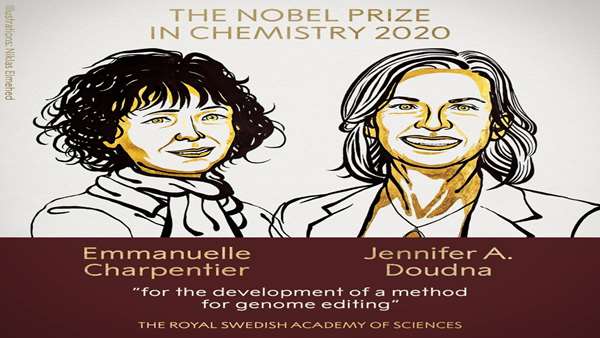Nobel Prize in Chemistry Awarded to 2 Scientists for Work on Genome Editing
Emmanuelle Charpentier and Jennifer A. Doudna developed the Crispr tool, which can alter the DNA of animals, plants and microorganisms with high precision.
Emmanuelle Charpentier and Jennifer A. Doudna developed the Crispr tool, which can alter the DNA of animals, plants and microorganisms with high precision.
The Nobel Prize in Chemistry was jointly awarded on Wednesday to Emmanuelle Charpentier and Jennifer A. Doudna for their 2012 work on the development of Crispr-Cas9, a method for genome editing. The announcement marks the first time a science Nobel has been awarded to two women.
“This year’s prize is about rewriting the code of life,” Goran K. Hansson, the secretary-general of the Royal Swedish Academy of Sciences, said as he announced the names of the laureates.
Dr. Charpentier and Dr. Doudna, only the fifth and sixth women to win the chemistry prize, pioneered early work on Crispr-Cas9, a kind of genetic scissors that allows researchers to alter the DNA of animals, plants and microorganisms with extremely high precision. Since then, it has been used in numerous scientific applications, from genetically modifying crops to developing cures-in-progress for conditions like sickle cell disease and hereditary blindness.
Fast, efficient and economic, Crispr “solves problems in every field of biology,” said Angela Zhou, an information scientist at the Chemical Abstracts Service at the American Chemical Society.
While the two scientists developed Crispr for general use, some of the system’s specific applications have become ensnared in thorny ethical debates around the genetic alteration of human embryos. In 2018, He Jiankui, a Chinese scientist, announced that he had used the technology to edit the genes of two babies in an attempt to make them resistant to H.I.V. Dr. He’s experiments were decried by many in the scientific community as irresponsible and dangerous because of the risk that the children may have suffered side effects from the procedure, as well as Dr. He’s lack of transparency.
Reference:https://www.nytimes.com/2020/10/07/science/nobel-prize-chemistry-crispr.html




ارسال به دوستان